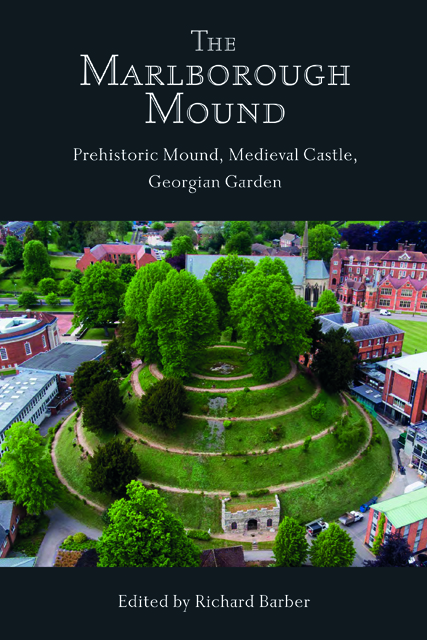Book contents
- Frontmatter
- Contents
- List of Figures
- Acknowledgements
- Preface
- 1 ‘One remarkable earthen-work’: The Neolithic Origins of the Marlborough Mound
- Afterword: The Round Mounds Project
- 2 Castles and the Landscape of Norman Wessex, c. 1066–1154
- 3 Marlborough Castle in the Middle Ages
- 4 The Mound as a Garden Feature
- Epilogue: The Marlborough Mound Trust
- A Inquisition into the State of Marlborough Castle, 11 September 1327
- B Castellum Merlebergensis, by H. C. Brentnall, F.S.A.
- C Constables of Marlborough Castle
- D Marlborough Castle: Archaeological Findings for the Medieval Period
- Bibliography
- Notes
- Contributors
- Index
Epilogue: The Marlborough Mound Trust
Published online by Cambridge University Press: 11 January 2023
- Frontmatter
- Contents
- List of Figures
- Acknowledgements
- Preface
- 1 ‘One remarkable earthen-work’: The Neolithic Origins of the Marlborough Mound
- Afterword: The Round Mounds Project
- 2 Castles and the Landscape of Norman Wessex, c. 1066–1154
- 3 Marlborough Castle in the Middle Ages
- 4 The Mound as a Garden Feature
- Epilogue: The Marlborough Mound Trust
- A Inquisition into the State of Marlborough Castle, 11 September 1327
- B Castellum Merlebergensis, by H. C. Brentnall, F.S.A.
- C Constables of Marlborough Castle
- D Marlborough Castle: Archaeological Findings for the Medieval Period
- Bibliography
- Notes
- Contributors
- Index
Summary
The Mound Trust was the idea of Eric Elstob, who was at the College from 1956–60. It was established in January 2000, and its objective was defined as being ‘to restore, conserve, preserve and maintain the Mound at Marlborough College and its immediate curtilage as a place of historic and public interest’, and ‘to educate the public about the archaeological and historical significance and merits of the Mound including organised access by prior appointment.’
These objectives were described in more detail in a strategy paper in 2003, which set out the agenda for the Trust’s activities. It began with a statement of what was known about the Mound at that point, which makes interesting reading in the light of subsequent events.
We know for certain that the Mound formed the motte of a twelfth century castle, which was an important government centre in the west of England in the late twelfth century, but seems to have declined in status in the thirteenth century. It was then part of a major landscape garden created by Lord Hertford in the early eighteenth century.
It may also be a prehistoric mound of a similar type to Silbury Hill, but this must for the moment be no more than a conjecture.
Each aspect of the Mound makes it a monument of national importance, but the multiple nature of its archaeological forms creates its own set of problems.
The strategy proposed for the Trust was then divided into three headings: conservation, restoration and exploration. All of these activities are still ongoing, and what follows is a brief survey of progress to date.
Conservation
Throughout the work on the Mound, there has always been an underlying concern about the stability of its structure, in the light of instances where interventions or natural occurrences have led to substantial damage to similar sites. The subsidence at Silbury Hill in 2000 as the result of earlier excavations and the collapse of part of Oxford castle motte in 2007 were very much in mind. One of the first projects was the installation of stability monitors, which fortunately have shown that the Marlborough Mound is not inherently in danger.
- Type
- Chapter
- Information
- The Marlborough MoundPrehistoric Mound, Medieval Castle, Georgian Garden, pp. 131 - 136Publisher: Boydell & BrewerPrint publication year: 2022



